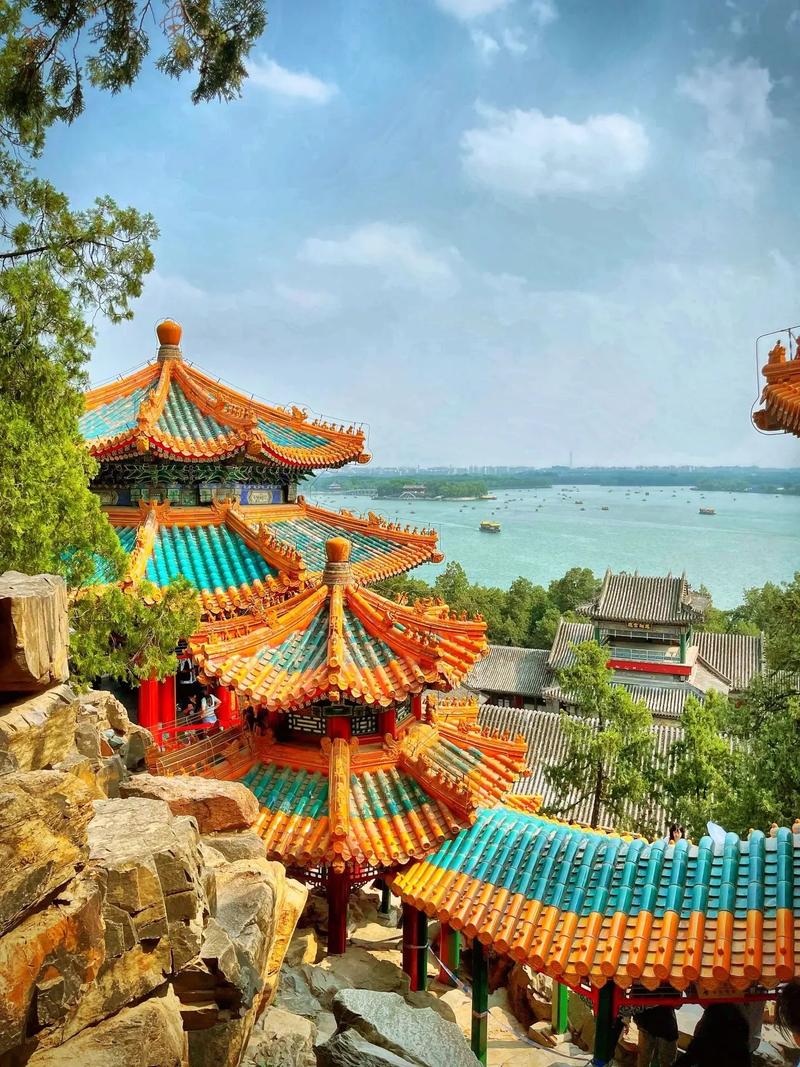
The Imperial Gardens of the Qing Dynasty
A Fusion of North and South: The Genesis of a New Style
The Qing Dynasty, China's last imperial dynasty, witnessed a flourishing of garden art. Inheriting a rich legacy of garden design from preceding dynasties, the Qing emperors, particularly those of the Kangxi, Yongzheng, and Qianlong reigns (1662-1795), embarked on an ambitious endeavor to create imperial gardens that embodied their vision of power, harmony, and cultural sophistication. These gardens, primarily located in Beijing and Chengde, weren't mere imitations of the past. Instead, they represented a dynamic fusion of existing traditions with innovative approaches, giving rise to what we now call the "Northern School" of Chinese garden design.
The Imperial Gardens of Beijing: A Microcosm of the Empire
The heart of the Qing empire, Beijing, housed some of the most iconic examples of these gardens. Within the Forbidden City, the Imperial Palace, lies the Yu Garden. This garden, reserved exclusively for the imperial family, served as a private retreat from the rigors of court life. Its design reflects the classic principles of Chinese gardens: carefully composed scenes, meandering pathways, and pavilions strategically placed to offer breathtaking views.
Beyond the Forbidden City: Summer Retreats and Hunting Grounds
Venturing outside the bustling capital, the Qing emperors sought respite and recreation in grander landscapes. The Summer Palace (Yiheyuan), nestled on the outskirts of Beijing, exemplifies the imperial quest for harmonious coexistence with nature. Vast Kunming Lake, dotted with islands and spanned by graceful bridges, dominates the landscape. Hillside pavilions, reminiscent of traditional Chinese paintings, offer panoramic vistas of the lake and its surroundings.
Chengde: Mountain Scenery and Imperial Power
Further north, in the cooler climes of Chengde, lies another masterpiece of Qing garden art: the Mountain Resort and its Outlying Temples. This sprawling complex, encompassing over 200 square miles, seamlessly blends man-made structures with the natural beauty of mountains, forests, and lakes. The resort served as a summer retreat, hunting ground, and venue for diplomatic encounters with neighboring tribes. Its diverse landscape, incorporating elements of Mongolian and Tibetan architecture, underscored the Qing emperors' dominion over a vast and diverse empire.
The Southern Influence: Echoes of Scholarly Gardens
While the grandeur of the imperial gardens distinguishes them, the influence of the "Southern School" of garden design, with its emphasis on literary allusions and the creation of intimate, contemplative spaces, is undeniable. This is evident in the use of poetic names for garden features, the incorporation of calligraphy and painting in pavilions, and the creation of secluded courtyards for reflection and scholarly pursuits.
A Legacy in Stone and Water
The imperial gardens of the Qing dynasty stand today as a testament to a bygone era. They embody not only the aesthetic sensibilities of the Qing rulers but also their desire to project an image of power, harmony, and cultural sophistication. These meticulously crafted landscapes continue to captivate visitors, offering a glimpse into a world where nature and artistry were masterfully intertwined.
Q&A
1. What makes the Qing Dynasty imperial gardens unique compared to previous dynasties?
The Qing Dynasty gardens incorporated elements of both the Northern and Southern Schools of garden design, creating a hybrid style. They were also significantly larger in scale and showcased the empire's vast resources and cultural reach.
2. How did the Qing emperors use their gardens for purposes beyond aesthetics?
The gardens served multiple functions, including summer retreats, hunting grounds, venues for diplomatic events, and spaces for personal reflection and scholarly pursuits.
3. What is the lasting legacy of the Qing Dynasty imperial gardens?
These gardens continue to be cherished as UNESCO World Heritage sites, attracting visitors worldwide and serving as a reminder of China's rich cultural heritage and the harmonious relationship between humans and nature they sought to embody.